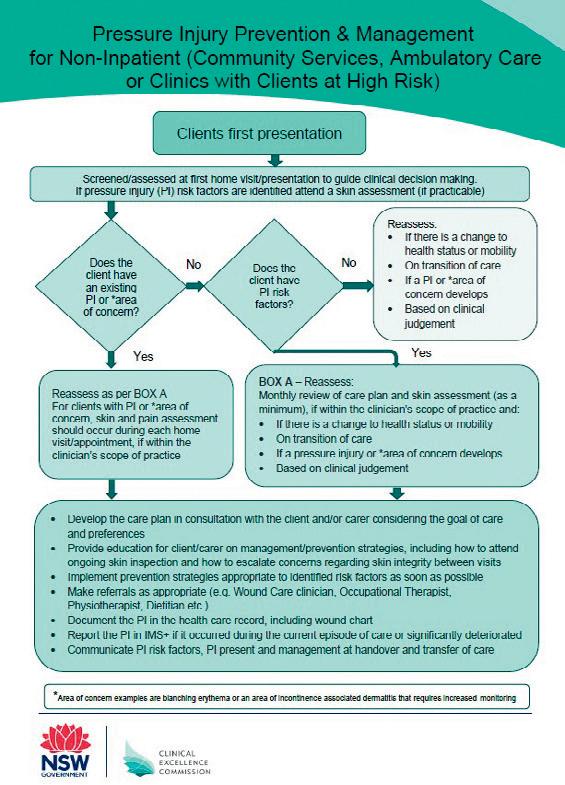
1 minute read
Reducing pressure injury risks during patient transport
Gandhi
The cost of pressure injuries in public hospitals in 2020 was around $9.11bn a year, of which treatment cost was $3.59 billion, according to research published in International Journal of Nursing Studies
Hospital-acquired pressure injuries account for over half of the total costs — a total of $5.50 billion per year. A pressure injury is often consider a ‘hospital issue’, with care during hospital stay or in transition after hospitalisation always being a key focus.
“What’s not on the forefront of everyone’s mind is the beginning of the patient journey,” said Clinical Excellence Commission Chief Executive Professor Michael Nicholl.
To strengthen focus on risk management during transport, reduce the risk of vulnerable patients developing pressure injuries and provide guidance to health staff, the Clinical Excellence Commission (CEC) has released a new resource — Guiding principles for pressure injury prevention and management during patient transport.
Nicholl said while the vast majority of pressure injuries are acquired, or worsen, outside hospitals, the new guidelines were a great new tool focused on the pre-hospital transport part of the journey. “Considering the millions of people we treat each year, pressure injuries are uncommon, and the new principles were developed to support the small group of vulnerable patients at risk of these debilitating injuries,” Nicholl said.
“Many patients quite vulnerable to pressure injuries are older and have existing health issues and pressure injury prevention and management is an area where we can improve patient safety and reduce the risk of harm to our patients.
“We encourage all health workers to adopt the key behaviours we’re recommending in our new guidelines as a way to help keep patients safe,” Nicholl said.
“Regular patient repositioning and reducing pressure and discomfort around the lower back are simple steps which will help prevent pressure injuries when patients spend long periods travelling in patient transport vehicles.
“It has been great to see collaboration across the health system lead to the new resources,” he said. Longer-term, the Commission plans to develop resources to support education and training specific to relevant organisations.
“We have to remember that there are multiple services involved in transporting patients, from home environment to aged care. We are going to tailor the resources based on different organisations involved,” Nicholl said. The CEC will be working with training partners to develop these resources.
Above is the pressure injury prevention and management flow chart, developed by the CEC, for non-inpatient.










